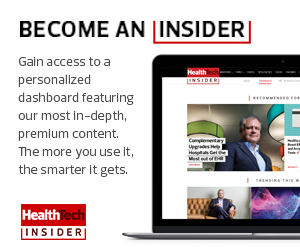1. Siloed Data Is an Opportunity Lost
Data of all types — clinical, financial and operational — remain siloed for reasons that range from interoperability issues to legacy systems. This becomes further complicated when redundancies are created through mergers (such as multiple electronic health record systems, enterprise resource planning solutions and enterprise imaging systems).
In addition, payers and providers alike continue to struggle with mining unstructured data for clinical and business insights. For example, the Centers for Medicare and Medicaid Services (CMS) calibrates payments to Medicare Advantage plans based on plan population health as determined through diagnosis codes that identify chronic conditions.
Patient conditions, however, are often not included in the codes captured on claims. As such, payers must conduct a tedious exercise each year to retrieve additional data, sometimes from printed medical charts, to fill in the gaps.
The bottom line: Unused data is an opportunity missed in an industry where resources are stretched increasingly thin, especially when it comes to advancing quality of care and establishing new revenue streams.
2. AI Is on the Verge of Becoming a True Force Multiplier
Precision medicine has been an extraordinarily important quest for the healthcare community. We are now, at long last, making steady and measurable progress in leveraging genomics to improve outcomes.
In cancer care, for example, it is becoming routine to analyze tumors for known gene mutations or expressions to select treatments likely to be most effective. Yet, despite its tangible benefits, the application of precision medicine, specifically in cancer care, still presents significant challenges. This approach can be expensive, invasive and time-intensive as tumors are analyzed through traditional pathology and genomics.
Increasingly, AI-enabled imaging presents a powerful opportunity to accelerate the identification and application of personalized treatments in ways that are often less invasive, faster and potentially more cost-effective. In the past few years, we’ve started to see several promising applications of AI in imaging to support precision medicine initiatives.
A study published in the Journal of Neuro-Oncology in April 2019 shows strong potential for using machine learning algorithms to reveal multimodal MRI patterns to accurately and rapidly predict the presence of genotypes and mutations in glioma — specifically, isocitrate dehydrogenase (IDH) and 1p19q codeletion status — which are good predictors of treatment efficacy.
There has also been substantial progress in AI screening for breast cancer, as shown in this recent study published by Nature in January 2020. These are just a few examples, and the potential for others is limitless.
3. The Drive for Greater Consumerism in Healthcare Is Accelerating
There are a number of factors at play. First, in our daily lives, we’ve all come to expect unlimited access to information and services — whether online or from our mobile phones. These expectations are now carrying over to our healthcare experience.
At last year’s HIMSS conference, Dr. Donald Rucker, national coordinator for health IT told attendees, “It’s long overdue for the healthcare industry to be a part of the smartphone economy and enable patients to access their health data through an app of their choice, at no additional cost.”
Giving patients access to their data through mobile devices and apps can drive increased levels of patient engagement and better empower their decision-making. In line with expanding expectations for sharing data with patients, CMS has finalized a rule focused on streamlining patient access to health data.
It is also possible that patients’ expanded access to their health information might help to fuel nascent interest in crowdsourcing of chronic disease data, which could someday present a wealth of information that clinicians and researchers have struggled to access easily.
How Organizations Can Make the Most of Their Data
Even as progress accelerates, the industry continues to face challenges as it works to unlock the greatest value from healthcare data. These include hurdles associated with interoperability, security and privacy as technologies advance faster than policy can keep pace.
Healthcare organizations and payers cannot afford to wait for perfection. Instead, they can make solid advances today that will enable them to accelerate at pace with patient expectations, regulations and technology. It all starts with a data foundation that can support the modern data experience that healthcare organizations and consumers crave.
Creating this new type of data experience requires a new type of data hub — one that allows organizations to consolidate their systems on a single platform to unify and share data across applications for better insight. Rather than acting as merely a data repository, the data hub must be able to share and deliver data within an organization for modern analytics and AI so patients and clinicians can benefit from the analysis.
As we enter this “data decade,” the future is bright for healthcare organizations and the patients they serve. By embracing a modern data experience — and building a foundation that ensures its success — researchers, providers and payers will be well positioned to improve patient outcomes and elevate operational proficiency in the years to come.











